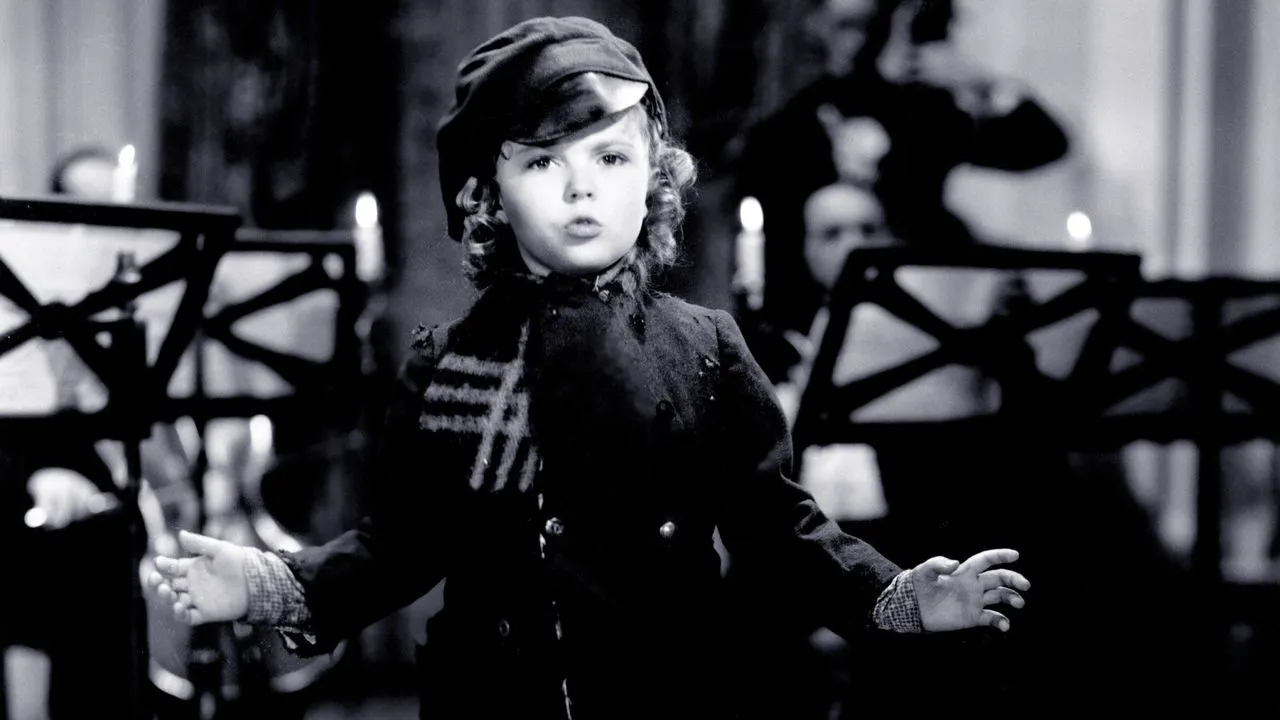In 1936, a time marked by the Great Depression's long shadow, audiences craved a little sunshine. Enter Shirley Temple, the effervescent child star whose boundless charm and talent dominated the silver screen. Her film "Dimples," released that very year, is a delightful showcase of her abilities, even if overshadowed by some behind-the-scenes drama.

Temple plays Sylvia Dolores Appleby, a precocious eight-year-old better known as "Dimples." Living in a romanticized version of New York City circa 1850, Dimples isn't your typical damsel in distress.
She's a street performer, belting out cheery tunes for spare change alongside her grandfather, Professor Eustace Appleby (played by the ever-charming Frank Morgan). However, the Professor's profession isn't quite as respectable as his title suggests – he's a skilled pickpocket with a heart of questionable gold.

The film revolves around Dimples' divided loyalties. Mrs. La Grange, a wealthy and kindhearted woman (played by Helen Westley), falls head over heels for the little charmer and offers to adopt her.
This presents a dilemma for Dimples: a life of comfort and luxury with Mrs. La Grange, or the rough-and-tumble existence with her rascally grandfather, whom she adores.

"Dimples" is a classic Shirley Temple vehicle, filled with her trademark effervescence. Her rendition of songs like "Curly Top" and "If I Had a Million Dollars" would have had audiences tapping their feet. Temple's on-screen chemistry with her canine companion, a scruffy terrier named Mike, adds another layer of sweetness to the film.
However, "Dimples" is not without its complexities. The film tiptoes around the issue of poverty, presenting Dimples' life on the streets in a sentimentalized light. Professor Appleby's pickpocketing escapades, while portrayed with comedic flair by Morgan, raise questions about morality.

There were also reports of friction on set. Temple, already a seasoned performer at the age of six, was known for her professionalism and competitive spirit. This reportedly clashed with Morgan, a seasoned actor himself, leading to a battle for scene-stealing supremacy.
Despite the tension, their on-screen dynamic is undeniable – a delightful mix of chaos and affection.

"Dimples" was a box office success, further solidifying Temple's status as Hollywood's top child star. The film's legacy, however, goes beyond box office numbers. It serves as a microcosm of Temple's career, showcasing her undeniable talent while raising questions about the exploitation of child actors in Hollywood's golden age.

Here are some additional points to consider:
The Influence of Vaudeville: Temple's portrayal of Dimples is heavily influenced by the vaudeville tradition. Her singing, dancing, and comedic timing all harken back to that era of live entertainment.
Social Commentary (or Lack Thereof): While the film presents a romanticized version of poverty, it does offer a glimpse into the struggles of street performers during the mid-19th century.

The Power of Music: Music plays a vital role in "Dimples," not just as a form of entertainment but also as a way to connect with characters and understand their emotions.
"Dimples" may not be Shirley Temple's most critically acclaimed film, but it is a delightful snapshot of her undeniable talent and charisma. It's a film that reminds us of a simpler time, even if that simplicity is somewhat fabricated. While the portrayal of poverty and morality raise questions, there's no denying the film's enduring charm, a testament to the power of Shirley Temple's smile and a well-placed song.







